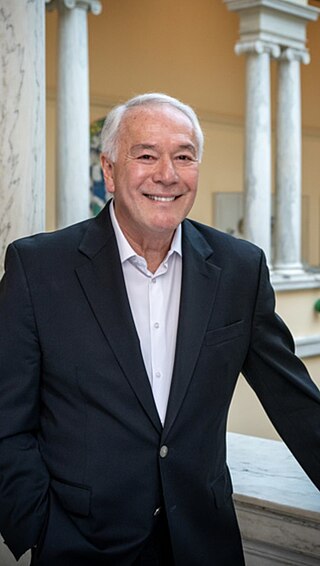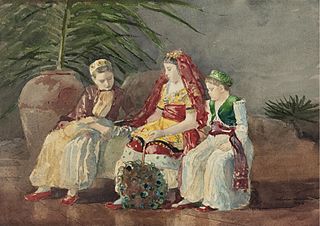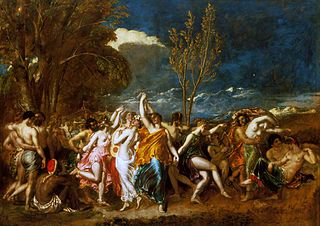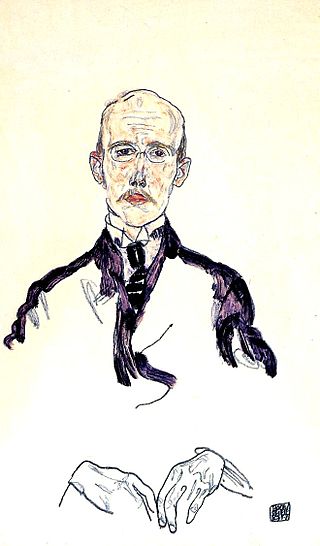
Christie's is a British auction house founded in 1766 by James Christie. Its main premises are on King Street, St James's in London, and it has additional salerooms in New York, Paris, Hong Kong, Milan, Amsterdam, Geneva, Shanghai, and Dubai. It is owned by Groupe Artémis, the holding company of François Pinault. In 2022 Christie's sold US$8.4 billion in art and luxury goods, an all-time high for any auction house. On 15 November 2017, the Salvator Mundi was sold at Christie's in New York for $450 million to Saudi Prince Badr bin Abdullah Al Saud, the highest price ever paid for a painting.

Art theft, sometimes called artnapping, is the stealing of paintings, sculptures, or other forms of visual art from galleries, museums or other public and private locations. Stolen art is often resold or used by criminals as collateral to secure loans. Only a small percentage of stolen art is recovered—an estimated 10%. Many nations operate police squads to investigate art theft and illegal trade in stolen art and antiquities.

Nazi plunder was organized stealing of art and other items which occurred as a result of the organized looting of European countries during the time of the Nazi Party in Germany.

Mary Fedden, was a British artist.

The Frontline Club is a media club and registered charity created by Vaughan and Pranvera Smith, located near Paddington Station in London. With a strong emphasis on conflict reporting, it aims to champion independent journalism, provide an effective platform from which to support diversity and professionalism in the media, promote safe practice, and encourage both freedom of the press and freedom of expression worldwide.

Robert Christiaan Noortman was a Dutch art dealer.
John Hurford is a prolific English psychedelic artist. He was born on a farm in Chulmleigh, Devon, England and began painting soon after he left school in 1964. Self-taught and with no formal training, he quickly became one of the real forces behind the British psychedelic art movement, and he was a contributor to all three of the most influential and important underground publications of the 1960s: Oz (magazine), Gandalf's Garden and International Times.

Botanic Gardens Conservation International (BGCI) is a plant conservation charity based in Kew, Surrey, England. It is a membership organisation, working with 800 botanic gardens in 118 countries, whose combined work forms the world's largest plant conservation network.

Robert KingWittman is a highly decorated former Federal Bureau of Investigation special agent who was assigned to the Philadelphia Field Division from 1988 to 2008. Having trained in art, antiques, jewelry and gem identification, Wittman served as the FBI's "top investigator and coordinator in cases involving art theft and art fraud". During his 20 years with the FBI, Wittman helped recover more than $300 million worth of stolen art and cultural property, resulting in the prosecution and conviction of numerous individuals.

Philip Jonathan Clifford Mould is an English art dealer, London gallery owner, art historian, writer and broadcaster. He has made a number of major art discoveries, including works of Thomas Gainsborough, Anthony Van Dyck and Thomas Lawrence.
The International Foundation for Art Research (IFAR) is a non-profit organization which was established to channel and coordinate scholarly and technical information about works of art. IFAR provides an administrative and legal framework within which experts can express their objective opinions. This data is made available to individuals, associations and government agencies. In September 2024, it announced that it would be winding down operations
The Art Loss Register (ALR) is the world's largest database of stolen art. A computerized international database that captures information about lost and stolen art, antiques, and collectibles, the ALR is a London-based, independent, for-profit corporate offspring of the New York–based, nonprofit International Foundation for Art Research (IFAR). The range of functions served by ALR has grown as the number of its listed items has increased. The database is used by collectors, the art trade, insurers, and law enforcement agencies worldwide. In 1991, IFAR helped create the ALR as a commercial enterprise to expand and market the database. IFAR managed ALR's U.S. operations through 1997. In 1998, the ALR assumed full responsibility for the IFAR database, although IFAR retains ownership. In 1992, the database comprised only 20,000 items, but it grew in size nearly tenfold during its first decade.

Children Under a Palm is a water colour painting executed in 1885 by the American artist Winslow Homer. It was featured in the second episode of the BBC TV series Fake or Fortune?.

Paul Westheim was a German art historian and publisher of the magazine Das Kunstblatt. The fate of Westheim's art collection, which was sold after his death by Charlotte Weidler, has been the subject of major art restitution lawsuits.
Art Recovery International is a private company that provides due diligence, dispute resolution and art recovery services to the international art market and cultural heritage institutions. It is headquartered in Venice, Italy.

The World Before the Flood is an oil-on-canvas painting by the English artist William Etty, first exhibited in 1828 and currently in the Southampton City Art Gallery. It depicts a scene from John Milton's Paradise Lost in which, among a series of visions of the future shown to Adam, he sees the world immediately before the Great Flood. The painting illustrates the stages of courtship as described by Milton: a group of men select wives from a group of dancing women, drag their chosen woman from the group, and settle down to married life. Behind the courting group, an oncoming storm looms, foreshadowing the destruction which the dancers and lovers are about to bring upon themselves.

Karl Mayländer was an Austrian art collector and businessman who was deported in 1941 from Vienna to Łódź, in German-occupied Poland, by the Nazis and later murdered in the Shoah.
Hugo Nathan (1861–1921) was a German Jewish banker and art collector.
Dr. Johanna Meyer-Udewald was a German Jewish art collector murdered by the Nazis at Auschwitz. A Picasso she owned was the object of a complicated restitution resolution involving three families.













